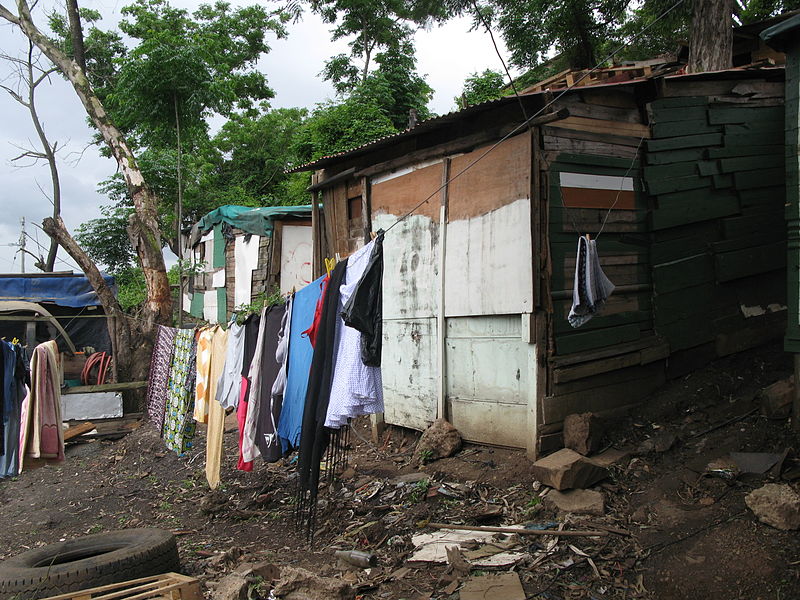Framing the future of urban resilience: An interview with Resilient Development Head Nazmul Huq
Ten years ago, ICLEI launched the first Resilient Cities Congress to respond to a growing and largely unaddressed need of local and regional governments to plan for the uncertain impacts of climate change in an integrated manner. Since then, resilience has gone from a fringe topic to a mainstream climate policy approach at all levels.
But how has resilience evolved and how will that trajectory continue in the face of ongoing global crises such as climate change, biodiversity loss and the COVID-19 pandemic? We asked Dr. Nazmul Huq, Head of the Resilient Development team at ICLEI, for his insights.
Where are we now in terms of urban resilience?
 Nazmul Huq: Addressing the current state of urban resilience requires us to face the complexities of defining the term – resilience of what, to what, or resilience of whom? Resilience is an umbrella concept that houses many interconnected issues, yet still lacks a definition that would allow us to standardize its monitoring across diverse contexts.
Nazmul Huq: Addressing the current state of urban resilience requires us to face the complexities of defining the term – resilience of what, to what, or resilience of whom? Resilience is an umbrella concept that houses many interconnected issues, yet still lacks a definition that would allow us to standardize its monitoring across diverse contexts.
However, we can still follow the progression of urban resilience frameworks and actions both quantitatively and qualitatively. In terms of quantity, we can see the growing numbers of resilience initiatives and a growing number of cities that are writing and implementing urban resilience plans. Qualitatively, we can witness the positive impacts of those initiatives for communities around the world, although challenges remain on how to capture such benefits into numbers or statistics.
While urban resilience remains a moving target, difficult to pin down, and very much contextual, the last decade has seen an explosion of work on the subject, as the Resilient Cities Congress series has repeatedly witnessed and facilitated.
Today, many different actors at different scales are undertaking various initiatives and campaigns focused on improving urban resilience, while in parallel, resilience is now an academic discipline in its own right. In the future, academic knowledge and real-world practices and initiatives will need to collaborate more closely to increase knowledge sharing and learning between researchers and practitioners.
Is resilience only about climate change?
Huq: No. Urban resilience is the ability of cities to anticipate, prevent, absorb and recover from shocks and stresses brought about by rapid environmental, technological, social and demographic changes, which can be caused by natural phenomena (flooding, earthquake, and epidemics), anthropogenic hazards (oil spill, radiation, system breakdown) or socio-economic crisis (political and social conflict, terrorism, economic crisis).
By this definition, cities not only need to seek resilience for their infrastructure and physical buildings, but also for their societies and economies. In effect, the current social and economic models cannot shield societies from shocks and uncertainties. We have seen the COVID19 pandemic already push millions of people below the poverty line even in western societies which are supposedly resilient, while Texas’ recent snowstorm has caused unprecedented havoc and casualties.
These examples are painful reminders that actions to build resilience should not be attached to just one specific goal or sector. Resilience building is a continuous and integrated process, and societies need to embrace it to withstand uncertainties and disturbances.
What does the launch of the Making Resilient Cities 2030 campaign mean for the next decade of action?
Huq: The Making Cities Resilience 2030 (MCR 2030) has plenty to offer to make a real impact for urban communities around the world. Launched at Daring Cities 2020, this decade-long campaign is now a global cross-stakeholder initiative for improving local resilience through multiple levels of integrated actions. It focuses on knowledge sharing, city-to-city learning, enhancing technical partnerships, and encouraging multilevel governance. The current initiative builds on the success and lessons learned from the previous, decade-long Making Cities Resilient Campaign, launched at the Resilient Cities Congress.
By participating in the MCR 2030, cities get to understand their status on the resilience journey. The campaign sets a three-stage resilience roadmap that cities can use to assess their level of resilience. Cities can then progress onto the next stage as they reach milestones based on set criteria and pledged commitments. The ultimate goal is for cities to mainstream Disaster Risk Reduction plans and to focus on monitoring and evaluation to ensure they achieve and maintain the resilience targets.
What role does resilience have to play in achieving climate neutrality?
Huq: Climate change mitigation remains of utmost importance for governments and societies around the world, and setting climate neutrality goals and strategies is the best way to achieve it. Yet, the impacts of climate change are already being felt and will continue to affect us all in the future. We need to be prepared, and we need to complement climate neutrality with resilience goals.
For instance, ICLEI’s Climate Neutrality Framework is built on three pillars of ambitious action that are focus on mitigation, namely (i) to drastically reduce and sequester greenhouse gas (GHG) emissions (ii) to divest, repurpose and reinvest, and (iii) to offset and compensate any GHG emissions that cannot immediately be removed, reduced or avoided.
However, the framework also stresses the need to fundamentally shift from our current socio-economic models and systems towards more resilient ones that can provide buffers against uncertainties, ensuring that communities will become key owners and part of transformation rather than being left behind. Even climate-neutral cities will need to become resilient and remain so through continuous efforts and reshaping.






